Matador Network's Blog, page 922
February 12, 2020
World's most instagrammed forests

About a third of the world’s landmass is covered in forest. And in addition to providing important stuff like the oxygen we breathe and habitats for wild animals, they also make for some downright jaw-dropping photographs. From the towering redwoods of California to the cloud forests of Costa Rica, the trees covering our planet can be our most beautiful sites when captured correctly. We took a look at Taxi2airport.com’s study of the 15 most-Instagrammed forests in the world and found some of the best, and most unique, places to photograph them.
15. Monteverde Cloud Forest, Costa Rica — 16,004 hashtags
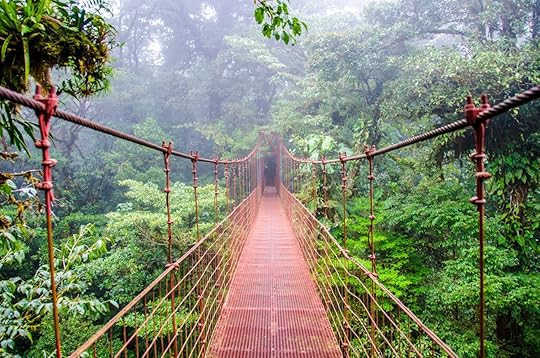
Photo: Simon Dannhauer/Shutterstock
Cloud forests are both exceptionally rare and exceptionally magical, comprising only about one percent of the total forest in the world but providing a misty, dreamy tropical landscape. Costa Rica’s Monteverde Cloud Forest spans about 35,000 acres, where rickety suspension bridges connect the treetops, and paved paths lead you through giant ficus trees to the sounds of resplendent quetzals. Some of the best pictures you’ll take will be atop the Cerro Plano viewpoint, where you’ll be able to see both the Atlantic and Pacific oceans as well as the mountains crossing the country.
14. Great Bear Rainforest, Canada — 25,892 hashtags
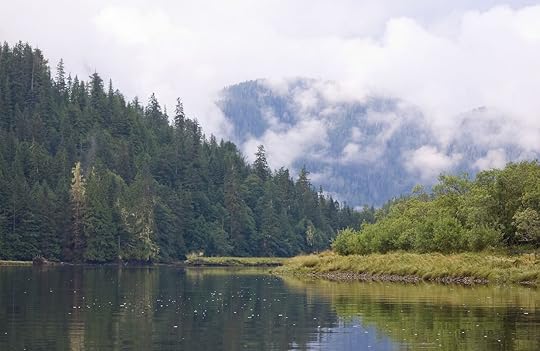
Photo: Neil Balderson/Shutterstock
As the name might imply, the main photographic draw to this 21-million-acre stretch of rainforest in British Columbia is the Kermode Bear, or spirit bear, a subspecies of black bear that appears completely white. They live almost exclusively in the forest along with grizzlies, Sitka deer, and other black bears but are far from the only thing worth seeing. Along the coast, you can also catch orcas and humpback whales during the right times of year. You’ll also find waterfalls, fjords, and mountain lakes throughout the park, all accessible from the Spirit Bear Lodge in the remote village of Klemtu.
13. Redwood National Park, California, USA — 32,268 hashtags

Photo: Fernando Tatay/Shutterstock
The massive California Redwoods may not be the easiest trees to fit into a frame, but at least getting to the top photo spots is ridiculously easy. Some of the best pictures in this field of giants are along Highway 101, and if you can find a safe turnout you can get beautiful images without leaving your car. Even the trails within the park are pretty easy, as reaching spots like Stout Grove and Lady Bird Johnson Grove offer short, flat paths. The Damnation Trail will take you through the Redwoods and down to the Pacific Ocean, giving you the chance to work on your coastal photography as well.
12. Boreal Forest/Taiga Biome, Canada — 35,792 hashtags

Photo: Pi-Lens/Shutterstock
Boreal forest, as an entity, accounts for nearly 30 percent of the world’s forest cover and is found mostly in northern Canada, Russia, and Scandinavia. Canada’s section runs from the Yukon territory all the way east, through the Northwest Territory and into Newfoundland and Labrador. During summer, you’ll find mild temps and the opportunity to photograph dense evergreen forests and trees with painfully thick bark. But if you can stand the cold, the real magic happens in the winter, when bright whites cover the firs, pines, and spruce trees. Dog sledding expeditions through the snow make perfect winter photos.
11. Cocora Valley, Colombia — 40,351 hashtags
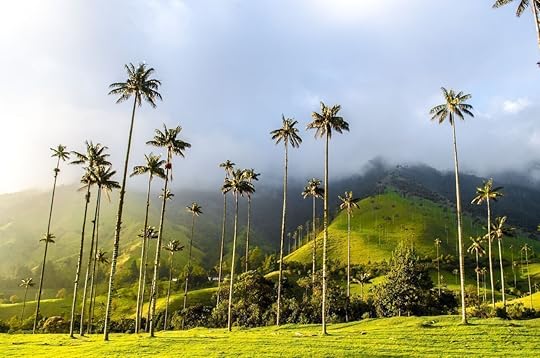
Photo: Exequiel Schvartz/Shutterstock
The deep green, mountainous Cocora Valley is dotted with tall, skinny palm trees — more specifically, the Quindio wax palm, the national tree of Colombia. Los Nevados National Natural Park is smack in the center of Colombia’s main coffee region and offers viewpoints throughout the valley that are quintessentially Colombian. The area is typically under tropical rain clouds too, so the dark skies offer a marvelous grayscale against the emerald Andean landscape.
10. Olympic National Forest, Washington, USA — 42,994 hashtags
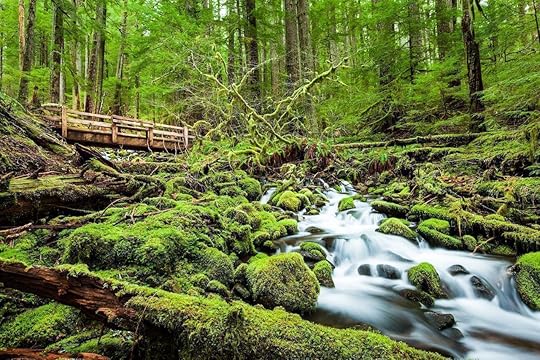
Photo: kan_khampanya/Shutterstock
Olympic National Forest is part of the largest temperate rainforest in the world, a serene world of old-growth trees, waterfalls, and the Cascade Mountains. The forest itself encompasses over 628,000 acres on Washington’s Olympic Peninsula, and though hiking to waterfalls like Sol Duc and Marymere make for great photos, don’t sleep on the coastline either. The jagged rock stacks off the shoreline of Rialto Beach near Hole in the Wall are imposing and mysterious at sunset. Almost anywhere in the Quinault Rainforest will have your pictures filled with bright green ferns and moss-covered rocks.
9. Bialowieza Forest, Poland — 50,068 hashtags

Photo: Aleksander Bolbot/Shutterstock
Though Europe’s last stretch of primeval forest is home to over 800 European bison, its most-photographed inhabitants have been dead for decades. The deadwood strewn about the forest floor is home to 12,000 species of flora and fauna, and these moss-covered tree carcasses make for striking photography on snowy days. The forest actually stretches through two countries, sitting in both Poland’s Bialowieza National Park and Belovezhskaya Pushcha National Park in Belarus. Both are part of the forest’s UNESCO World Heritage Site.
8. Sequoia National Forest, California, USA — 50,164 hashtags
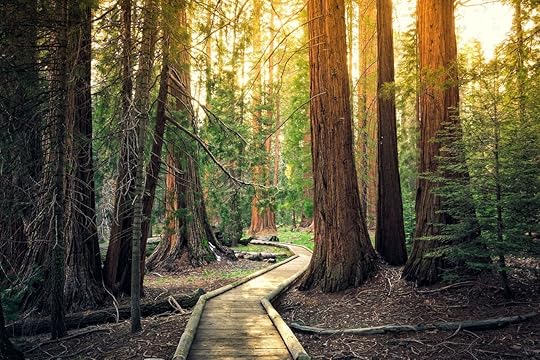
Photo: Stephen Moehle/Shutterstock
Sequoia National Forest sits within the Giant Sequoia National Monument in Central California, boasting the largest concentration of the world’s biggest trees. General Sherman — the biggest tree in the world — is the star of the show here, though you’ll probably find it impossible to get the whole thing in one picture. But there’s more to photograph here than just massive trees; you might also consider hiking to the top of Morro Rock, where on a clear day you can see out over the entire San Joaquin Valley. Or take a walk and have lunch under Tokopah Falls, which contrast brilliantly against the blue sky on sunny afternoons.
7. Jiuzhaigou Valley, China — 52,774 hashtags
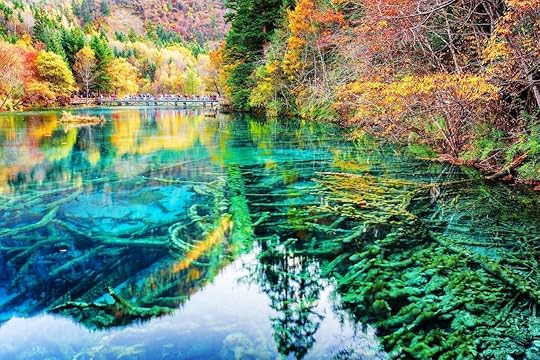
Photo: Efired/Shutterstock
This technicolor wonderland in the Sichuan province of southwestern China, with clear, turquoise waters set against the changing leaves at spots like Mirror Lake and Pearl Beach in the Rize Valley, will make all your followers spit out their coffee, yelling, “Where is THAT?” You’ll also want to capture the beautifully still reflections at Five Color Pool and the river of grass along the Reed Sea. It’s a little like the Everglades if it were surrounded by mountains.
6. Atlantic Forest, Brazil — 52,863 hashtags

Photo: vitormarigo/Shutterstock
When you share a country with the most famous jungle in the world, it’s easy to get overlooked even when you span the entire southeastern coastline. The Atlantic Forest runs from the southern state of Rio Grande do Sul all the way up the coast to Paraiba in the northeastern corner. Over 88 percent of the original forest land has been destroyed by human development since the Portuguese arrived 500 years ago, and because it’s one of the most biodiverse places on the planet, over 1.1 million acres are now protected as a UNESCO World Heritage site. You’ll find eight percent of the world’s plant species here, as well as dozens of extremely rare birds.
5. Mossy Forest, Malaysia — 64,564 hashtags
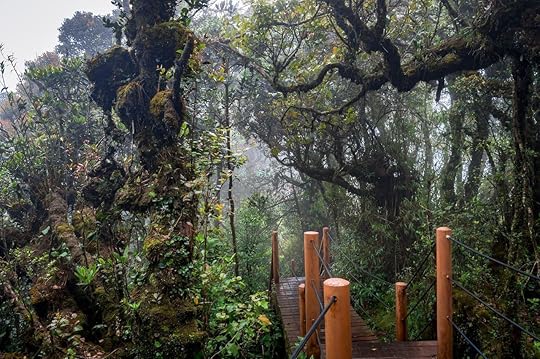
Photo: LSphotos91/Shutterstock
Though the name isn’t particularly original, it is painstakingly accurate. This high-elevation forest stands atop the highest points in the Cameron Highlands and sits in a constant mist among the clouds. That mist creates the perfect environment for moss-covered everything, from rocks to tree branches to viewpoint pagodas. Artists have even been known to come out and paint the moss different colors for a more surreal experience. While we don’t recommend
that, the forest is pretty easy to visit, with a 500-foot slippery boardwalk that winds throughout.
4. Arashiyama Bamboo Forest/Sagano Bamboo Forest, Japan — 83,321 hashtags

Photo: Guitar photographer/Shutterstock
These famous bamboo groves just west of Kyoto are easily accessible from the main street of Arashimaya, just north of the Tenryu-ji Temple. It’ll be hard to get lost here, as only one path cuts through the thick troves of bamboo. It’s a short-but-magical walk that’ll make you feel completely transported just a few minutes from the city’s bustling streets. There’s even a walking tour available, which will lead you to all the places you were inspired by on Instagram.
3. Sherwood Forest, England — 142,011 hashtags
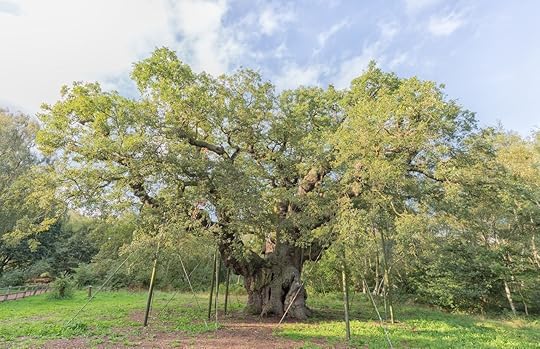
Photo: Mark Godden/Shutterstock
Easily the most Instagrammed forest per square mile, this thick woodland in central England is only a little over 1,000 acres and still lands third on the list. That’s mostly thanks to a certain green-tighted vigilante who tormented the Sheriff of Nottingham, and if you take the short walk to Major Oak, you can find the tree that was allegedly his hideout. Sherwood Forest is particularly magical in the mornings, so try and head out early and catch the eerie mist reflecting the sunlight through the trees.
2. Amazon Rainforest, Brazil — 197,615 hashtags
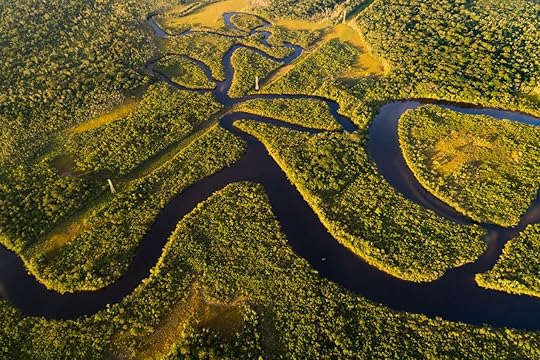
Photo: Gustavo Frazao/Shutterstock
Though most people associate the Amazon with Brazil, it actually has large swaths running through Peru and Colombia, with small sections in Ecuador, Guyana, French Guiana, Suriname, Bolivia, and Venezuela. If you combined all of those locations’ hashtags, it’s very possible this forest would rank on top. While the sights are spectacular, the best things to photograph here are the astounding biodiversity of animals, whether that’s pink dolphins, sloths, parrots, and other rare birds. Though your phone may take stellar pictures, a trip to the Amazon may be the time to invest in DSLR, as zooming in on treetops won’t yield the same quality.
1. Black Forest, Germany — 1,489,943 hashtags
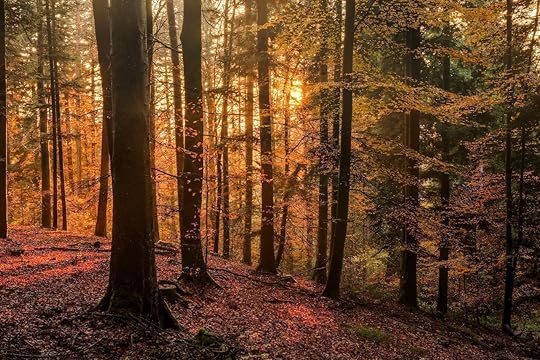
Photo: Andreas Zerndl/Shutterstock
This mountainous forest deep in southwest Germany is choc-full of glorious viewpoints, ideal for both summer and winter photography — and it topped out in hashtag rankings by a huge margin. The top of Feldberg – the highest point in the forest – gives a spectacular panorama of the entire region, and the view down from Hornisgrinde onto the Berghotel in Mummelsee is especially striking when covered in snow. Though you won’t find towering waterfalls here, the vegetation around many of the falls — like Krai Woog Goompen and Geroldsauer — make them equally picturesque. 

More like this: The 10 least-visited national parks in the US, and why you should go
The post Behold the most Instagrammed forests in the world appeared first on Matador Network.

Martha’s Vineyard gingerbread houses
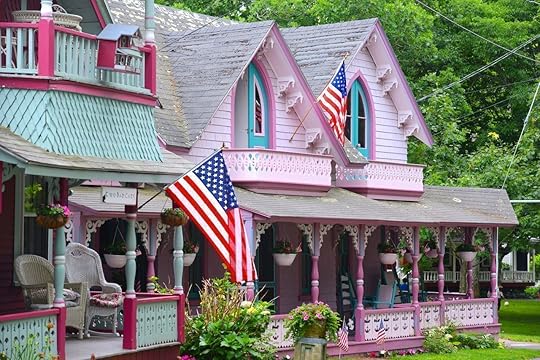
In the fall of 2019, I found myself desperate to escape the chaos of city life and the near-constant chirping of sirens and crashes and bangs of construction workers. I needed quiet, less concrete, and more ocean. With a visit from two out-of-town friends imminent, we decided to eschew the usual romp around New York City and instead drive to Cape Cod and then take the ferry to Martha’s Vineyard. One of my friends had seen pictures of colorful houses in town called Oak Bluffs. Placated and a little awestruck by views of endless blue ocean ways and magnificent coastline views, we would have agreed to anything, so off we went, not really knowing what to expect.
Arriving in Oak Bluffs felt like stepping into a fairy tale. The 26-square-mile town consists mostly of Victorian-era homes that look like gingerbread houses painted in psychedelic colors — bubble gum pink, aquamarine, lavender, mint, and lime green. Intricate latticework decorates the quaint wrap-around porches and the eaves of the roofs.
Oak Bluffs is mostly abandoned in the off-season like the rest of Martha’s Vineyard. In the stillness, we approached the center of town, where an iron, open-air tabernacle stands. Though most of the houses were empty, others showed evidence of a year-round presence — a screen door propped open, a bike leaning against the porch. A sign hinted at the name of this ghost town of dollhouses: “The Martha’s Vineyard Camp Meeting Association.” We circled the grounds a couple more times, but without a tent in sight and the museum closed for the season, we left Oak Bluffs without knowing more about what those jolly little houses have to do with camping.
Later, I learned that although Oak Bluffs looks more like a modern Hansel and Gretel remake than a Martha’s Vineyard summer retreat, the origins of Oak Bluffs are rooted in a 19th-century religious movement called “camp meetings.”
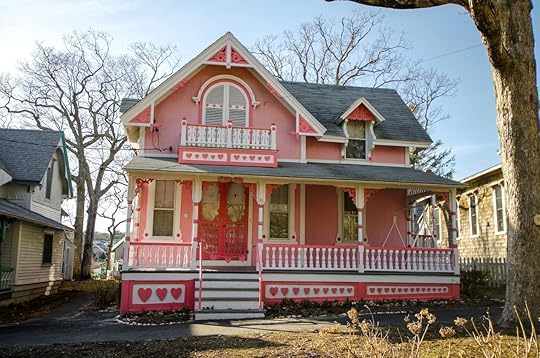
Photo: melissamn/Shutterstock
These religious gatherings sprung up in the 1800s. At the time, nomadic settlers followed traveling preachers to outdoor sites (typically a campground) to worship. There, they would camp, sing hymns, and pray before returning home. Camp meetings were especially popular among Methodists and Presbyterians but these gatherings attracted curious visitors of every denomination looking for a respite from the drudgery and isolation of frontier life.
In 1835, Jeremiah Pease, a member of the Edgartown Methodist Episcopal Church, decided he wanted to start his own camp meeting. He and six of his fellow parishioners leased a half-acre of land called Wesleyan Grove in present-day Oak Bluffs, built a pulpit, and set up nine tents for attendees. The congregation held the first camp meeting on August 24, 1835, and it turned out to be hugely popular. By 1855, worshippers had set up 200 tents to participate in the camp meetings. From there, the history of the Martha’s Vineyard Camp Meeting Association gets a little more complicated.
To understand how this religious community took root in Martha’s Vineyard, I spoke with Nancy Blank, a tour guide at the Camp Association’s Cottage Museum. Blank’s family has been living in Oak Bluffs for at least 100 years. Her grandfather married into a family that owned a cottage in the neighborhood. He held onto the house, #13 Clinton Avenue, and around 1940 bought a neighboring cottage, #9, for $500 as a wedding gift for Blank’s mother and father. When he passed away, Blank and her sister moved into the cottages, and today Blank’s daughter lives in one with her husband and three children.
Blank explains that the first camp meetings lasted for around seven to 10 days in the summer. Soon, however, families arrived with their tents a week early and stayed after the camp meetings ended. The tents were arranged in concentric circles so people could be near each other for prayer, bible study, and communal suppers — and, Blank adds, so that the ministers could be sure their flock behaved once the camp meetings ended. In 1859, the first cottages, built from tent frames, popped up on the campground. The outbreak of the Civil War made canvas hard to come by, making the wood cottages even more popular. The cottages, built in the distinct Victorian, gingerbread style you can still see today, also allowed camp meeting worshippers to extend their stay through the summer. In 1860, the grounds were officially recognized as the Martha’s Vineyard Camp Meeting Association. Eight years later, the MVCMA was officially incorporated into the Commonwealth of Massachusetts.
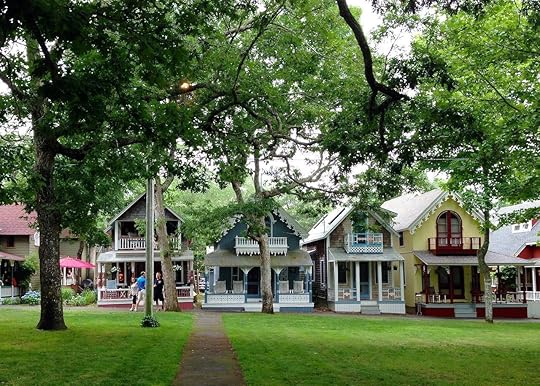
Photo: Meagan Marchant/Shutterstock
Oak Bluffs expanded alongside the MVCMA. Two years after the Civil War ended, the Oak Bluffs Land and Wharf Company became dead set on turning Martha’s Vineyard into a lucrative summer resort destination — much to the chagrin of the campground residents. According to Blank, the Camp Meeting Association erected fences around the cottages to ward off drunks and vacationers who didn’t appreciate the religious nature of their summer homes. For residents of the MVCMA, Oak Bluffs was not a resort town, it was strictly a place of worship. In 1879, they solidified this with a permanent wrought-iron tabernacle that replaced the 4,000-seat canvas one built nine years earlier.
The Martha’s Vineyard Camp Meeting Association continued to develop into a miniature city. Residents gave its mini-neighborhoods their own names too — Cottage Park, Trinity Circle, and Victoria Park among them. By 1880, when the campground adopted the name Cottage City, there were 500 cottages on the property (in 1907 the name of the town changed to Oak Bluffs).
The narrow pathways between homes were granted names like Clinton Avenue, where Blank and her family lived, also known as Ministers Row. They started having a little fun, too.
“The ministers got so involved in games of croquet that they would sometimes forget to go to prayer meetings,” she says.
By the end of the century, the camp meetings took on the structure they have now: A series of religious services that runs from July 1 to August 31. Today, a different minister leads services each Sunday. Methodist, Unitarian, Protestant, African Methodist Episcopal Church, and Catholic ministers are all scheduled to appear in 2020.
Most people who attend camp meetings these days are from out of town — ministers from different churches around the country often draw their flock and Blank jokes that “people fight to preach here.” It’s the tourists eager to catch a glimpse of the gingerbread houses that really take over the MVCMA in the summer, though.
“On any given day during the summer at least four or five tour buses come [to the museum],” Blank says. “At the height of the bus season, I’ll give tours to eight busloads of people.”
Of the 500 original MVCMA cottages, only 315 survive today. And they weren’t always painted in rainbow colors. In the early 1950s, when Blank was still a little girl living in her parent’s cottage, an artist arrived at the camp. She bought a cottage — and decided she wanted to paint it pink.
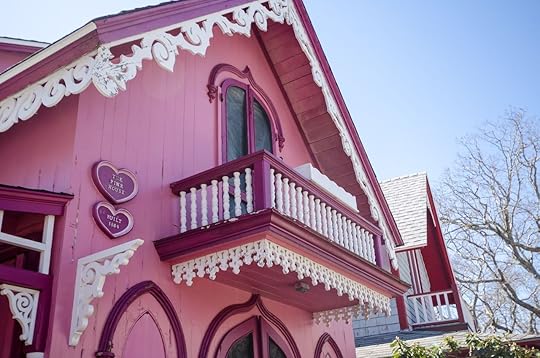
Photo: melissamn/Shutterstock
“We all gagged and called it the Pepto Bismol house,” recalls Blank.
But the pink house attracted visitors and kicked off a trend. More residents started painting their houses and tourists started flocking in. Today, “You’d be massacred by half the people in the campground if you asked them to go back to original colors,” she says.
Around 100 of the cottages are occupied all year round. The vast majority of the permanent residents come from a religious background and live in cottages passed down through their families for generations. The current residents of the MVCMA are interconnected through deep bonds of friendship that span many generations, as much as religion. Blank recalls that her father, who visited the campground every summer, once brought his roommate, Anthony, with him one year. Anthony fell in love with her father’s close camp friend Eleanor, and the pair moved into the cottage her family owned, where their descendants still live today. Proximity tightens those bonds.
“People who live there can’t have the slightest qualm living cheek to jowl with their neighbors,” says Blank, noting that the dining room of her friend Peggy — who she has known essentially since birth — butts up against the bathroom of a neighbor. But the upside is that this community has survived and thrived through love and fellowship for 185 years.
“A couple summers ago I was sitting in the museum watching my grandkids,” she says. “We had a baby pool and there were 30 kids all playing in this little wading pool. They were all children of the camp meeting. That is what it’s all about.” 

More like this: The best day trips from Boston worth getting out of town for
The post How religious revivals led to the colorful Martha’s Vineyard gingerbread houses appeared first on Matador Network.

Where to eat in Aruba
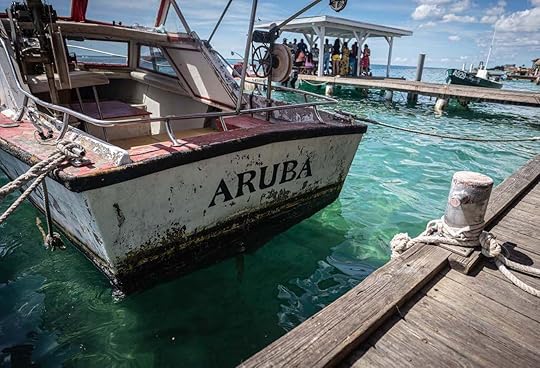
Over 1.6 million Americans each year chose Aruba as their winter hideaway of choice. This dynamic island packs a powerful punch in a small package — 75 square miles to be exact. From the windswept rocky crags of the east side to the plush white sand beaches along the western coast, this tiny island has enough variety to keep sunchasers coming back again and again.
Aruba sits a mere 15 miles off the coast of Venezuela, meaning on clear days you can catch a glimpse of the neighboring country in the distance. It’s a desert island with a hot and dry climate year-round versus the humidity and frequent rains found in many other parts of the Caribbean. Its location just outside of hurricane alley means that major storms rarely hit it directly.
Aruba’s first documented inhabitants were members of the Arawak tribe, whose ceramic remnants can be dated back to at least 1000 CE. Spanish colonists arrived in 1499, enslaving much of the Arawak population before the Dutch took over in the 1600s. The island was briefly under British control in the early 1800s before officially becoming part of the Netherlands Antilles in 1845. Today, the island remains connected to its colonialist past as a constituent country in the Netherlands.
This rich cultural history is deeply apparent in Aruba’s food. Infusing cuisine from South American, Caribbean, Spanish, Portuguese, and Dutch backgrounds, Aruba offers an array of taste bud temptations ranging from refined seaside dining to the neighborhood snackshop.
Use this guide to steer yourself toward some of the best food experiences on the island and you will definitely not go hungry.
Fill up on seafood
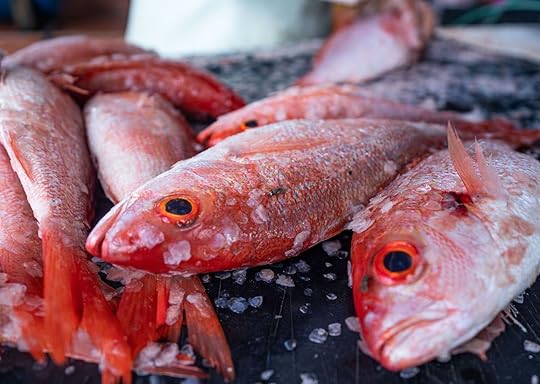
Photo: Who Knows Where
Surrounded by the reefs and choppy waters of the southern Caribbean, Aruba has easy access to both deep sea fish and shallow feeding fish. Menus across the island feature options like mahi mahi, wahoo, yellowfin tuna, grouper, amberjack, and barracuda.
Zeerovers has been a local hangout since owner Eric Bisslik started selling fresh seafood out of the back of his boat over 30 years ago. Today, this seaside restaurant remains family owned and a local favorite, making it one of the best places to not only taste Aruban flavors but to experience the community-focused culture of the island.
Don’t be daunted if there’s a line out the door, as it moves pretty quickly. At the counter, you’ll order your seafood by weight and choose your sides. The pancake-like pan bati (literally meaning “beaten bread”) is excellent for those last bits of your meal, while sweet fried plantains balance out the salty seafood. While waiting for your food, head to the back patio to snag a table with a view of the fisherman’s wharf, where fresh catch is delivered throughout the day.
If you’re a hot sauce lover, be sure to try some of Aruba’s famous Hot Delight papaya sauce, which can be found in just about every restaurant (and home!) on the island. The sauce is made from Caribbean papayas and has been produced on the island since the 1800s by the Ruiz family. Just be warned: even the mild version has a pretty good kick to it!
Best live music cities in the world

Vegas is not just for Elvis anymore. Or Celine. Or Britney. Or the Thunder from Down Under and Cirque du Soleil. As of this year, it has officially become the world’s capital of live music, at least according to leisure travel planners lastminute.com.
In a recent survey, the travel site took a look at the number of live music events set to take place in major cities around the world. And not only did Sin City place far ahead of live-music perennials like Austin and Nashville, it was the top city in the world. London, Toronto, and Berlin were next on the list. And Vegas was the only city in the US to even crack the top 10.
The study went even further, looking at stuff like the most popular genre of music in each city, number of music events, and total events per capita. Dublin, Ireland, was the winner of most events per capita, followed by London and Las Vegas. Vegas was also top in country music events, with 1,459 in 2019. That was nearly 14 times second-place finisher Montreal, which had 107.
Los Angeles was the king of classical music, with 868 events, dwarfing next-best Toronto which had 17. New York led the way in jazz, hip-hop, and electronic music, while Miami had the most Latin music events with 117. You can read the breakdown of the whole study here, or take a look at the infographic below.

Photo: lastminute.com

Photo: lastminute.com

More like this: 10 underrated cities for singles across the US
The post Las Vegas is the world’s top city for music, according to new study appeared first on Matador Network.

New Machu Picchu hiking routes 2020

Machu Picchu’s Inca Trail closed early this year due to a landslide earlier this month, but you can bet that when it reopens, it will be flooded with tourists from around the world. To minimize the damage done by crowds of hikers along popular hiking routes, and to diversify tourism opportunities in the region, Peru is planning to open new routes to Machu Picchu this year.
A budget of $1.2 million has been set aside for projects around the ancient citadel in 2020. Much of the budget will go toward maintaining the area’s infrastructure, repairing footpaths, building new information centers and waste stations, and funding a planting campaign that includes planting one million native plants and trees along the pathways. The rest will be dedicated to opening new access routes.
One of the new trails will be called the Amazon Access Route, and it will connect the Intihuatana community with the areas of San Miguel, Inkarakay, Mandor, and Puente Ruinas up to Machu Picchu town. Another route will connect Choquellusca with San Antonio de Torontoy, on the way to Machu Picchu. 

More like this: Jaw-dropping images from a desolate mountain trek in Peru
The post New Machu Picchu trails are opening in 2020 appeared first on Matador Network.

FDA allows lab animals to be adopted

The practice of using animals for lab research is incredibly controversial, but at least now there’s a future for some of the dogs, cats, rabbits, guinea pigs, and farm animals that have been subject to experiments. The Food and Drug Administration (FDA) recently changed its policy to allow healthy lab animals to be adopted, transferred, or retired to shelters or sanctuaries, after they have been used for research, The Hill reported. Previously, all lab animals were euthanized after they were no longer needed.
In 2019, Maine Senator Susan Collins introduced the Animal Freedom from Testing, Experiments, and Research Act, which would put in place a federal policy for post-lab animal adoptions. In a statement to The Hill, she said, “There is no reason why regulated research animals that are suitable for adoption or retirement should be killed by our federal agencies. I’m pleased that the FDA has joined the NIH and VA in enacting a lab animal retirement policy.”
Regardless of what happens post-lab testing, many still categorically oppose the use of animals in testing, and this new policy isn’t likely to change that. Luckily, the United States 2020 budgetary spending bill sets goals for reducing the use of dogs and cats in federally funded medical research. It’s the first time Congress has taken steps to discourage the use of animals for scientific testing, which, combined with the new adoption opportunities, marks an important step in the right direction. 

More like this: Everything you need to know about taking your dog into the great outdoors
The post The FDA now allows lab animals to be adopted appeared first on Matador Network.

February 11, 2020
How to learn the basics of Mandarin

There is no language in the world as widely spoken or as ancient as Mandarin. With a written history dating back more than 3,000 years, Mandarin is the oldest written language still commonly spoken today, with around 917 million native speakers throughout the world.
But despite its commonality, the potential for heinous mispronunciation and a complicated writing system has made Mandarin a notoriously difficult language to learn. This reputation is undeserved, however, as many people will find that the grammar is a breeze.
Learning the basics of Mandarin could be well worth your time — around a seventh of the world population speaks Mandarin, so grasping the basics of language will introduce you to a world of possibilities. Whether you’re looking to make human connections during your travels, want to be able to find your way in China’s hectic cities, or simply want to know how to order hot pot, this guide will help get to grips with Mandarin.
Why learn Mandarin?
Open yourself up to almost one billion people
Mandarin is by far the most predominant language in China and Taiwan, and the Chinese diaspora spans the entire world. Millions of Mandarin speakers live in Indonesia, Thailand, Malaysia, the United States, Canada, and Peru, so almost everywhere you go, you can find people to converse with.
Ease your travel pains
Few locals in China can speak English fluently. Heavily touristed areas will have signs in English or at least pinyin — the phonetic writing of Mandarin — but beyond that it’s all written Mandarin.
Calling a cab, taking the metro, or even figuring out how to buy tickets to the Forbidden City can get confusing, so it’s useful to be able to ask for help when you need it. Additionally, haggling culture is still very prevalent, and depending on where you are, vendors can mark-up prices tenfold for foreigners. Knowing numbers can certainly help with getting the right price for your souvenirs.
The basics: Why it’s easy and why it’s hard
What’s easy about learning Madarin
Mandarin has the reputation of being a difficult language for Westerners to speak — and in many regards, rightly so. But what many overlook is how astoundingly easy the grammar can be. There’s no changing of verbs to match the subject (as in “I speak” vs. “he speaks”) and past or future tenses are made by simply adding a syllable. There’s also no splitting between male or female, and plurals are given through context.
Let’s take the sentence “he/she ate noodles” to compare between languages:
In Mandarin phonetics, this is ta chi le miantiao (他吃了面条).
Instead of conjugating the verb chi to the past tense, in Mandarin you can simply add the syllable le after the verb to denote that it was in the past. Other verb tenses are also expressed in a similarly simple way. Also note that when speaking, there is no he/she but rather a singular “they.” A similar structure is also used for plural subjects: Ta men chi le miantiao (他们吃了面条).
Likewise, the verb chi did not change. To denote “they” as a plural, a simple men was added.
What’s hard about learning Mandarin
The beast of the Mandarin language has two heads: one is pronunciation, the other writing.
Each syllable can be spoken with four intonations, and to the untrained ear, these are difficult to distinguish, let alone speak with ease. Each intonation gives a different meaning to a word. Luckily, however, if you get the intonations, wrong people can infer the meaning based on context.
Writing in Chinese is also a burden — Chinese is written with characters, with each character representing a syllable. Most characters can stand on their own as words, but oftentimes, they’re combined to make new words. For example the individual characters in miantiao (面条) are flour thread, but together, they mean noodles.
A typical Chinese dictionary will have 20,000 to 40,000 characters, but most schoolchildren will need to memorize around 8,000. You’ll need to know about 3,000 to read a newspaper, and the way Chinese kids learn is by picking up vocabulary sheets and just memorizing.
Pinyin
Pinyin is the phonetic guide to Mandarin using the Latin alphabet. This is incredibly helpful when you have a grasp of how to speak the language but haven’t memorized thousands of characters. Included within pinyin are the four main intonations. Here’s the word ma as an example:
Mā (mother) — This tone is flat and level.
Má (numb) — This intonation inflects upwards, a little like when you’re asking a question in English.
Mă (horse) — Like the symbol above the letter “a” indicates, this intonation dips downward and rises back up.
Mà (yell/shout/express anger) — This intonation is spoken with a quick expulsion of air, a little like you got punched in the gut.
A couple more notes on pronunciation
“X” is pronounced like sh, as in shin.
”Q” is pronounced like ch, as in chin.
”C” is pronounced like ts, as in tsunami.
Words ending in “-ang” are pronounced with a soft “a,” more similar to “awn” than a hard “ang.”
Similarly, words ending in “-ong” have a long “o” sound. The word long, meaning “dragon”, for instance, sounds more like “low-ng” than the English word “long.”
Getting oriented in Mandarin
You’ll find the cardinal directions everywhere in China. In Mandarin they are:
Běi (北) — North
Nán (南) — South
Xī (西) — West
Dōng (东) — East
Combining a direction with one of these common landmarks can help you find your way around:
Mén (门) — Gate
Qiáo(桥) — Bridge
Kǒu (口) — Entrance, exit
Jiē (街) — Street
For example, you may be looking for the Beijing subway stop Huìxīnxījiē Běikǒu. Huìxīn is the name of the location, xījiē indicates that it’s on the west side of the street, and běikǒu means it’s the north entrance.
If you’re looking for a specific spot, you can say the place you’re looking for followed by zài nǎlǐ, which literally translates to “is where?”
If you’re looking for Tiananmen Square, you would ask, Tiānān mén zài nǎlǐ? (天安门在哪里?)
Practical vocabulary
Wèishēngjiān (卫生间), the bathroom, is one to remember. If you wanted to ask where the bathroom is, you’d ask wèishēngjiān zài nǎlǐ? Most public washrooms don’t come equipped with toilet paper, so don’t forget to bring your own.
If you happen to find something you like while shopping, ask zhège duōshǎo qián? (这个多少钱), which literally translates to, “This how much money?” If the vendor responds with an amount you deem too high, you can respond with tài guìle (太贵了), meaning, “It’s too expensive.”
And, the most important of all, express your gratitude when you receive help or service by saying xièxiè (谢谢), or thank you. 

More like this: How to ask for the bill in 13 major languages
The post Mandarin is both incredibly hard and ridiculously easy. Here’s how travelers can come to grips with this Chinese language. appeared first on Matador Network.

Best singles cities in the US

Singles tend to view Valentine’s Day like losing football teams view the Super Bowl — a tradition they’d rather forget, perhaps even despise, yet would totally embrace if circumstances were slightly different. Well, being single on Valentine’s Day — or any day, for that matter — doesn’t have to be a bitter experience. There are hundreds of cities all across the US ideally suited to the single lifestyle. Whether your goal is to find your spouse, a steady relationship, or a string of emotionally toxic one night stands, the dating scene in many US cities is strong enough to get even the most cynical singles back in the game.
WalletHub compared 182 cities across the US, using metrics like nightlife options, single population, online dating opportunities, number of dating venues, active Tinder users, social clubs, weather, taxi fare cost, and more. They broke these statistics down into three categories — Economics, Fun & Recreation, and Dating Opportunities — and assigned each category a grade based on a 100-point scale. The results shed some much-needed light on the top 10 cities for singles across the US.
Hint: Pretty much everywhere that isn’t New York.
10. Portland, Maine

Photo: jejim/Shutterstock
Economics score: 55.2
Fun & Recreation score: 42.45
Dating Opportunities score: 77.23
Total score: 62.26
The smallest city on the list by far, Portland’s showing in the top 10 is particularly impressive. It’s probably no surprise that the city ranked poorly for Fun & Recreation, as it’s simply not big enough to compete with larger cities with more entertainment venues, but its relative affordability and solid Dating Opportunities score make Portland a must-visit for singles in New England.
9. Seattle, Washington

Photo: emperorcosar/Shutterstock
Economics score: 39.34
Fun & Recreation score: 70.79
Dating Opportunities score: 70.81
Total score: 62.94
If you play your cards right, you really shouldn’t be sleepless in Seattle in 2020. Like many major cities, going out in Seattle means you should carve out some room in your monthly budget, but a good balance of Fun & Recreation and Dating Opportunities make it all worth it. Seattle also ranked in the top five for cities with the best gender balance, so while you’re passing those rainy days in the bar, at least you won’t be lacking options.
8. Madison, Wisconsin

Photo: Sean Pavone/Shutterstock
Economics score: 62.52
Fun & Recreation score: 40.11
Dating Opportunities score: 80.39
Total score: 63.78
Remember that scene from Love Actually where Colin arrives at an “average American bar” in Wisconsin, and immediately picks up three stunning women? Dating in Wisconsin isn’t that easy, but it’s probably easier than you thought — in Madison, anyway. The city ranks the highest in the top 10 for Dating Opportunities, and while men shouldn’t expect to wander into a dive bar and be swarmed by dozens of beautiful women, the male-female balance is actually among the best in the country.
7. Los Angeles, California

Photo: View Apart/Shutterstock
Economics score: 38.56
Fun & Recreation score: 61.57
Dating Opportunities score: 77.66
Total score: 63.87
Everyone knows LA is expensive, but you may not have realized that it has one of the best gender balances in the country, as well as some of the most plentiful online dating opportunities. Sure, it’s more expensive than San Diego, but it also scored seven points higher in Food & Recreation. And for better or worse, since everyone in LA works unconventional jobs, partying until 5:00 AM on a Tuesday night is the norm, not the exception.
6. Chicago, Illinois

Photo: Luis Boucault/Shutterstock
Economics score: 39.13
Fun & Recreation score: 76.05
Dating Opportunities score: 71.00
Total score: 64.29
Chicago is among the least affordable cities on the list when it comes to going out for food and drinks, but it makes up for it with its abundance of nightlife venues and high number of singles looking to mingle. Given its historically low temperatures in winter, which often keep people indoors, its high singles ranking is a testament to the quality of its entertainment venues and the number of singles willing to brave the cold for a date.
5. Portland, Oregon

Photo: Sean Pavone/Shutterstock
Economics score: 51.03
Fun & Recreation score: 64.26
Dating Opportunities score: 73.74
Total score: 64.54
Portland might not be the most affordable city to find love, but it’s certainly one of the most fun. In addition to its high Dating Opportunities score, Portland ranked in the top five for cities with the most nightlife options. Between its abundance of local breweries, live music venues, and restaurants, there are no shortage of places to bring your date if you don’t mind shelling out some extra cash.
4. San Diego, California
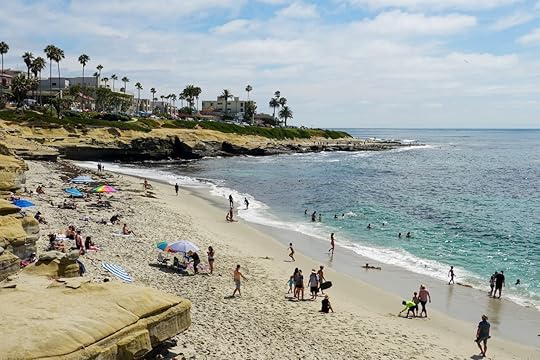
Photo: bonandbon/Shutterstock
Economics score: 47.36
Fun & Recreation score: 69.57
Dating Opportunities score: 71.65
Total score: 65.06
San Francisco might dominate the scene in Northern California, but SoCal isn’t exactly coming up short. San Diego and Los Angeles both made the top 10, and it’s not exactly a surprise. Warm weather means outdoor adventures, patio seating, and beach days — all of which are great date ideas. In addition to being home to a wide range of dating opportunities, San Diego also placed first overall in the general-balance category. So if you strike out at a bar, you can’t use the “bad ratio” as an excuse.
3. San Francisco, California

Photo: IM_photo/Shutterstock
Economics score: 30.69
Fun & Recreation score: 75.01
Dating Opportunities score: 78.09
Total score: 65.47
Thanks to its low unemployment rate, plentiful dating opportunities, and abundant nightlife, Northern Californians can look to San Francisco for their dating needs. The city scored dismally in the affordability category, as the Bay City is notoriously pricey, but its redeeming social aspects certainly compensate for that. Indeed, it ranked in the top five overall for the most nightlife per capita — so whether you’re looking for places to meet people or the perfect date spot, you won’t be starved for options in San Francisco.
2. Denver, Colorado

Photo: Albert Pego/Shutterstock
Economics score: 52.45
Fun & Recreation score: 59.70
Dating Opportunities score: 79.68
Total score: 66.19
Scoring highly across the board, Denver is still fairly affordable, compared to the number one city, meaning you can take your date out for a meal, movie, and drinks without clipping coupons for the next two weeks. Denver even came in second overall for cities with the best gender balance, ranking just behind San Diego. Colorado as a whole did well in the rankings, with Colorado Springs coming in at 45th on the list and Aurora at 104th.
1. Atlanta, Georgia

Photo: Sean Pavone/Shutterstock
Economics score: 50.71
Fun & Recreation score: 72.15
Dating Opportunities score: 79.72
Total score: 69.27
If you’re single, desperately seeking a relationship, and relatively location independent, move to Atlanta. WalletHub named it the best city for singles in the US, despite it ranking 134th in the Economics category. That means its other merits — like plentiful online dating opportunities, share of single population, active Tinder users, and dating venues — are pretty overwhelming.
And even if you don’t happen to be a resident of one of these cities, don’t lose heart just yet. At least you’re not living in Pearl City, Hawaii, which came in dead last with a total score of 36.50. 

More like this: Wacky traditions single people around the world have to endure
The post 10 underrated cities for singles across the US appeared first on Matador Network.

Taiwan’s Cycling Route #1

I had two weeks off and wanted to bicycle through another country’s landscape. I yearned for pleasant weather and safe streets. Hotels must be affordable. The food should be delicious. As the father of a young child, I needed to call home whenever I wanted. And finally, I wanted a bike path that was long, scenic, and far-flung. Putting these things together, I set my sights on Taiwan.
Taiwan Cycling Route #1 is a network of trails that circumscribe the entire island, for a total distance of 600 miles. Taiwan is already a cyclist’s dream, with paved paths and dedicated bike lanes in every neighborhood, but Cycling Route #1 is its pinnacle. If you’re relatively fit, cycling is an invigorating way to explore this semi-tropical Pacific paradise. As convenient and accommodating as Taiwan is, though, there were a few things I wish I’d known about Route #1 before setting off. Here’s how to get ready to pedal the Formosan coast.
Get inspired by the movie.

Photo: Opat Suvi/Shutterstock
Few Americans have ever heard of Island Étude, the Taiwanese sleeper-hit about a hearing-impaired musician riding his bike around his home country. But the 2004 film is a big-hearted character study, and it helped inspire the Taiwanese government to build its $36 million trail system. Building the trail was, in part, a patriotic endeavor. Having endured centuries of foreign rules and decades of dictatorship, the government is encouraging Taiwanese people to explore — and take pride in — their own country.
If you can’t find a copy of Island Étude, I recommend Riding the Breeze. The latter film, about a Japanese journalist, stuck biking with a free-spirited Taiwanese teenager, is much cheesier than its predecessor, but Breeze is a picturesque introduction to the Taiwanese landscape.
Prep for weather.

Photo: PixHound/Shutterstock
I flew to Taipei in April — one of the best decisions this traveler has ever made. Taiwan is a semi-tropical island surrounded by three distinct seas. For two weeks, the spring weather vacillated between pleasantly warm and sultry hot. The weather reported thunderstorms every single day, but I never once got stuck in a rainstorm.
This was a stroke of luck. Taiwan’s weather changes every hour, and a storm could have swooped in at any minute. Summers can be baking hot, and many travelers will tell you that winter, from December to February, is actually the best time to visit. The sun could be intense, and I endured my share of sunburn. But in general, I couldn’t have dreamed of a better climate for biking.
Rent a bicycle.

Photo: Robert Isenberg
If you’ve ever lugged a disassembled bicycle through airport security, then rebuilt it in your hotel room, you will love the Taiwanese rental system. The manufacturer Giant Bicycles is based in Taiwan, and they have retail locations in every major city. You can rent a top-quality road bike — plus panniers (bags meant for bikes) and basic gear — for a reasonable price, then return the bike to any other Giant location.
One caveat: Reservations should be made two weeks in advance, and arrangements can be confusing for foreigners before they arrive as there’s no single, centralized reservations system. You could try one of Giant’s Taipei stores. Alan’s Mountain Bike Store was also great to correspond with and had Giant bikes to rent.
Because of the challenges of organizing a rental from abroad and my odd itinerary, I ended up purchasing a cheap folding bike from Bikehome, a little bike shop in Taipei. The shop was easy to reach on the red line, and the mechanic meticulously tuned up every part of the bike before I rode it away. At the end of the trip, I gave the bike away, satisfied with my $200 purchase. Still, the Giant option is a real boon, and now that I’m better acquainted with the country, I will definitely rent next time.
The Taiwanese have thought of everything.

Photo: Robert Isenberg
I have never visited a country so convenient for travel, especially by bicycle. WiFi is everywhere. Traffic is aggressive but well behaved. Hotel rooms routinely provide vacuum-sealed toothbrushes, combs, and prophylactics, and special machines pour purified water for your Nalgene bottle. The transit system is immaculate and punctual, and you can quickly figure out any trip to any destination. Most signs are conveniently marked in Mandarin and English. To me, the most heart-warming custom was to provide free umbrellas in little stands; since roving storms are hard to predict, these umbrellas are free to borrow and take with you, like a Little Free Library for rain gear.
Taiwanese people are also famously kind. This was evident the moment I stepped off the airplane. But it isn’t just patience and generosity — the Taiwanese I encountered also minded their own business. No random teenagers asked to take a picture with me. No one stopped me in the street to practice English. No hawkers tried to hustle me, even in the busy Shilin night market. Each interaction felt genuine and natural; when I needed directions or advice, folks seemed happy to help.
The route is a network, not a single trail.

Photo: PixHound/Shutterstock
As organized as Taiwan is, don’t expect a single path that leads from Point A to Point B. Like most multi-use trails around the world, Cycling Route #1 breaks off every few miles. Sometimes, you ride through entire towns, on regular roads, dodging trucks and motorbikes as you desperately seek a trail marker. I lost my way several times, especially in the northeastern mining villages, which are crowded with hills. Anyone on the street is likely to help you, but knowledge about Route #1 is sometimes hazy.
During a difficult first day, I spent many hours getting lost among the mining villages east of Taipei. Signs were few and far between, and I took several wrong turns through the rolling hills and narrow river valleys around Xizhi. When I hit an industrial park, I found a worker and told him my destination city, Keelung. He didn’t speak a word of English, and I only know a few phrases in Mandarin, but he used pantomime to explain the route. From his hand gestures, I figured out how many traffic lights I would pass through, how many bridges I would cross, and when I should make a critical right turn. I easily navigated the next few miles, consulting some additional road workers along the way, who waved and pointed my way to Keelung.
It’s hard to say exactly how long the whole route would take. Taiwanese tourism websites provide maps and itineraries for eight-day treks, but this seemed like a breakneck pace to me. Granted, most riders don’t ride cheap folding bicycles, preferring slick aluminum models designed for touring. But unless you’re in a hurry, I suggest booking at least two weeks to circumnavigate the whole island. There are just so many worthy stops, like the justifiably famous Taroko Gorge and Sun Moon Lake.
The east coast is a hidden gem.

Photo: Mowjoe/Shutterstock
The vast majority of Taiwanese people live in Taipei, the nation’s dense capital, and almost everybody else lives on the western half of the island. West coast cities like Taichung, Tainan, and Kaohsiung are basically one vast megalopolis, packed with industry and culture.
But I spent my two weeks on the eastern side, riding from Taipei to the southern city of Taitung. This coast is a wonderland of cliffs, beaches, mountains, and valleys, and it’s far more rural and remote. My total passage was only 160 miles, which is a pretty relaxed schedule. Every vista was a patchwork of farms and forests, bridges and tunnels. For long stretches, I smelled the salty breezes wafting off the ocean while green mountains loomed to my right. My goal was to take it easy, to pause whenever I wanted and photograph rice paddies and mist-cloaked hills. My mileage varied from day to day: 50 miles one day, 30 miles another, plus a two-night stay in the city of Hualien.

Photo: weniliou/Shutterstock
Hualien is a humming, seaside tourist town, packed with high-rise hotels and places to eat. The city is best known as a springboard to Taroko National Park, a 200,000-acre playground of deep ravines and 27 mountain peaks. Unfortunately, an earthquake struck Taroko during my trip, and the park was closed when I arrived, due to potential landslides. Instead, I spent a full day meandering the city’s river paths, relaxing in coastal parks, and taking in an open mic at a local pub.
The next three days, I pedaled into the Eastern Rift Valley, a lush corridor of villages and farms that extends for more than 100 miles. The landscape is a checkerboard of forest and fields, with mountain ranges rising on both sides. The roads are still smooth and well-trafficked, but the pace is tranquil. Vista after vista reminded me of Taoist watercolors, especially in the hazy mornings.
When in doubt, try 7-Eleven or Family Mart.

Photo: Robert Isenberg
Taiwan is dense with shops and restaurants, and the night markets are legendary. No matter where you go, you will always find savory delicacies, starting with the world-famous beef noodle soup.
Yet biking is a different kind of travel; you often need to stock up on food and supplies, or just find cover during a thunderstorm. Meanwhile, sweat and stench aren’t appreciated in seaside restaurants, especially if you’re riding alone. Rest assured, 7-Elevens are everywhere, along with their ubiquitous rival, FamilyMart. These shops serve as hardware stores, souvenir shops, liquor stores, and luncheonettes.
My favorite snack was a breakfast sandwich, including scrambled eggs and tiny slices of ham, wrapped into a cylinder of nori seaweed. Sushi and breakfast sandwiches are two of my favorite foods, and I had never imagined them (literally) rolled into one. These were almost always available on the refrigerated shelves of FamilyMart, along with microwavable lunches and marinated hard-boiled eggs.
Train regulations are impossible.

Photo: Richie Chan/Shutterstock
Trains in Taiwan are safe, efficient, and fast. But they’re still a headache for cyclists. To start, even putting your bike on a train is a constant hassle. Certain trains allow it, but not all. The public transit website is hard to follow, even when available in English. One poor station agent helped me stuff my folded bicycle into an enormous trash bag; I paid for the bike like an extra passenger. Another agent looked flustered and did her best to accommodate, but placing my bike in a passenger car clearly stressed her out. This is a major problem because the segment between Hualien and Yuli is only traversable by train. So unless you’re fluent in Mandarin and a wiz at transit schedules, expect some awkward conversations on the platform.
You don’t have to do the whole thing.

Photo: SUJITRA CHAOWDEE/Shutterstock
Most people hear “600 miles” and think, “Nope.” But the rental system makes it easy to find a bike in one city, pedal 100 miles or so, and then return the bike and do something else. Since Route #1 is a circle, it’s tempting to just ride around Taiwan until you return to your starting line. But if you don’t have the time or budget for that, you can mix and match as much as you want. And believe me, I’ll be returning to ride the western half as soon as logistically possible. Cycling in Taiwan was love at first ride. 

More like this: Why Taiwan was made for outdoor lovers
The post Taiwan’s Cycling Route #1 has everything you want in a bike ride appeared first on Matador Network.

What is Italy's aperitivo hour?

Italians are known for their art. Throughout history, Italy has been celebrated for its Renaissance paintings and sculptures, cutting-edge fashion, and gothic architecture. However, there is another Italian art form essential to Italian culture, and it’s one that’s arguably more fun to participate in: the aperitivo.
Aperitivo comes from the Latin word aperire, meaning “to open.” Historically, an aperitivo was an alcoholic beverage consumed before dinner to whet your appetite. Today, it’s a daily ritual that embodies la dolce vita.
The idea of a pre-dinner drink is not uniquely Italian; however, the Italians begin the evening in a way that cannot be missed. True to form, this daily routine exudes Italy’s quintessential style of slowing down, socializing, drinking, and, of course, eating.
Aperitivo hour, or rather hours, starts every night from around 6:00 PM (though things don’t start to pick up until 7:00 PM) to 9:00 PM at local cafes, bars, hotels, and restaurants throughout Italy. Italians and tourists alike take part in drinks and snacks while they unwind and catch up with friends before their evening meal.
The main event, naturally, is the drinks. Locals use this time to enjoy an early evening drink and, for tourists, it’s a great way to sample some of Italy’s famous cocktails. Most establishments will offer a full menu of alcoholic and nonalcoholic drinks, but the tradition revolves around classic Italian aperitifs like vermouth, Campari, and Aperol.
Legend has it the ritual was started by Antonio Benedetto Carpano, the creator of modern vermouth, in Turin in the 1780s. He claimed he had concocted the perfect pre-dinner drink that balances bitter and aromatic herbs with fortified white wine to stimulate one’s appetite. Vermouth’s popularity grew so much that the ritual of aperitivo spread throughout the country (or so the story goes).
Like many drinking legends, aperitivo hour’s specific origin is contested. Still, most Italians agree that it started in the northern part of the country. Florence, Venice, and Turin have a thriving aperitivo scene, but Milan is arguably the unofficial capital of the aperitivo. The Milanese bars and restaurants fill up fast as the sun sets, especially along the canals of the Navigli district. The lively bars and extravagant buffets are great for people watching and present incredible value. Beyond Navigli, there is an aperitivo for everyone’s taste and style. Milan comes alive as Italians leave work and meet up with friends to mingle over a drink. Fashionable rooftop bars and trendy hotels offer a slightly more elegant, and expensive, version of the tradition while trattorias and wine bars celebrate the ritual in a more casual and economical adaptation.
The custom also thrives south to the Italian capital and beyond. Many of Rome’s rooftop bars, ritzy hotels, and local cafes participate in the ritual. You’d be hard-pressed to find a town that does not observe Aperitivo in some form.
Regardless of where you go, aperitivo hour is defined by vermouth and other spirits for simple cocktails like the Negroni (Campari, sweet vermouth, and gin), Americano (Campari, sweet vermouth, and soda), and the Spritz (Aperol or another amari with Prosecco and soda).

Photo: Mate Karoly/Shutterstock
Aperitivo is also about light snacking. Italy’s cuisine is ubiquitous throughout the world, and aperitivo hours have no shortage of the food we all know and love. For the price of a cocktail (usually between five and 15 euros) restaurant and bar patrons are presented with a variety of Italian snacks. But not all aperitivi are created equal. Some bars will bring out a tray of olives, cheese, and chips while you enjoy your cocktail. Others offer lavish buffets of food including pizzas, salumi, seasonal vegetables, bruschetta, salads, and seafood, all included in the price of your drink. While aperitivo does not traditionally replace dinner, some bars and restaurants serve enough food that you’ll rethink your evening plans.
Wherever the time-honored tradition is enjoyed, the Italian hospitality, refreshing cocktails, and energizing atmosphere make everyone feel a little more integrated into the Italian culture and way of life. After just one Aperol Spritz, it’s easy to see why this centuries-old tradition is a daily highlight of so many. It will have us all rethinking our post-work happy hours and dreaming of sipping a Campari cocktail on a Florentine Piazza or nibbling on fresh Italian cheeses and cured meats overlooking the Venetian canals. 

More like this: These shockingly bitter spirits will make your toes curl
The post Understanding the art of Italy’s aperitivo hour appeared first on Matador Network.

Matador Network's Blog
- Matador Network's profile
- 6 followers



